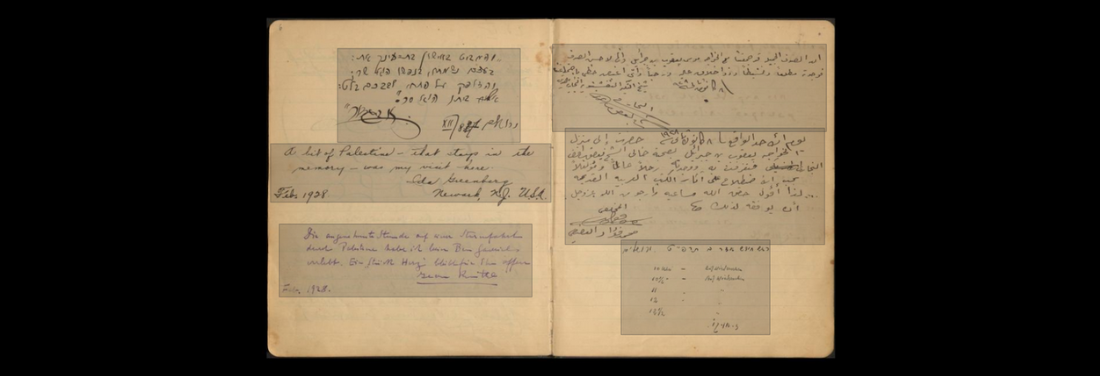Visualising Digitised German-Jewish Archives
Digitization and Visualization of Historical Archives
For decades, the amount of digitally available archival materials has been steadily growing. Two key reasons for digitization are location-independent access and the preservation of original documents through reduced physical handling. At the same time, people face limitations when processing large volumes of visual information. This makes it all the more important to use modern technologies to present the available data in an appealing and organized way, thereby inspiring further research. The better the visualization solutions, the more enjoyable and productive the user experience when browsing the content.
Based on this, the project draws from the digitization of 24 personal archives and collections of German-Jewish intellectuals from the 19th and 20th centuries. This digitization was carried out between 2021 and 2022 in cooperation between UWA/CSMC and the National Library of Israel (NLI) and was complemented by the accompanying research project "Wandering Artefacts: The Material History of German-Jewish Archives" (RFE10). Given the vast amount and complexity of the available image material, the project focuses on three exemplary approaches from different perspectives:
- A digital edition of a multilingual guestbook from 20th-century Jerusalem
- An online exhibition of selected Hamburg-related documents from the NLI archives
- A complete digital representation of the archive of Moritz Lazarus (1824–1903)
The HCDS is currently supporting the first project phase: the digital edition of the multilingual guestbook:
Digital Edition: “An East-Western Divan – The Guestbook of M. Y. Ben-Gavriêl”
Eugen Hoeflich (1890–1965), a Vienna-born Jewish author, was a versatile figure: poet, journalist, playwright, Middle East correspondent, and a passionate advocate for Jewish-Arab understanding. Together with his wife Miriam, he maintained an open house, first in Vienna and later, from 1927 onwards, in Jerusalem. Between 1921 and 1966, they kept a guestbook that documented hundreds of visitors from around the world. The entries—signatures, drawings, poems, and blessings in various languages—reflect their extensive personal and intellectual networks.
The guestbook offers a unique resource for the study of Jewish life in Vienna, Jewish migration to Palestine, as well as Jewish-Arab and German-Israeli relations. As a multifaceted and unique artifact, it can only be fully deciphered through collaborative efforts.
To facilitate the identification of entries, people, dates, languages, and other key information, an interactive digital edition of the guestbook is being developed. This edition will feature 155 digitized pages and link individual entries to available data from internal and external sources, such as names, dates, transcriptions, translations, and authority files. The platform will be continuously updated with additional information or corrections and can be adapted for similar projects. The open-source tool Recogito will be used for the initial annotation, exporting all gathered annotation data as a CSV file, which will then serve as the basis for visualization.
The technical implementation of the visualization will be handled by the Hub for Computing and Data Science (HCDS). Potential synergies with existing projects of a similar nature—such as the digital edition of a sketchbook by Konrad Levezow under the direction of Prof. Dr. Iris Wenderholm (Art History, UHH)—have already been discussed. This module and its intended outcome may be of particular interest to researchers working on albums, multilingual artifacts, or data linking in other fields.
Contacts @HCDS:
Projektpartner: Cluster of Excellence ‘Understanding Written Artefacts’ (UWA), Sebastian Schirmeister

